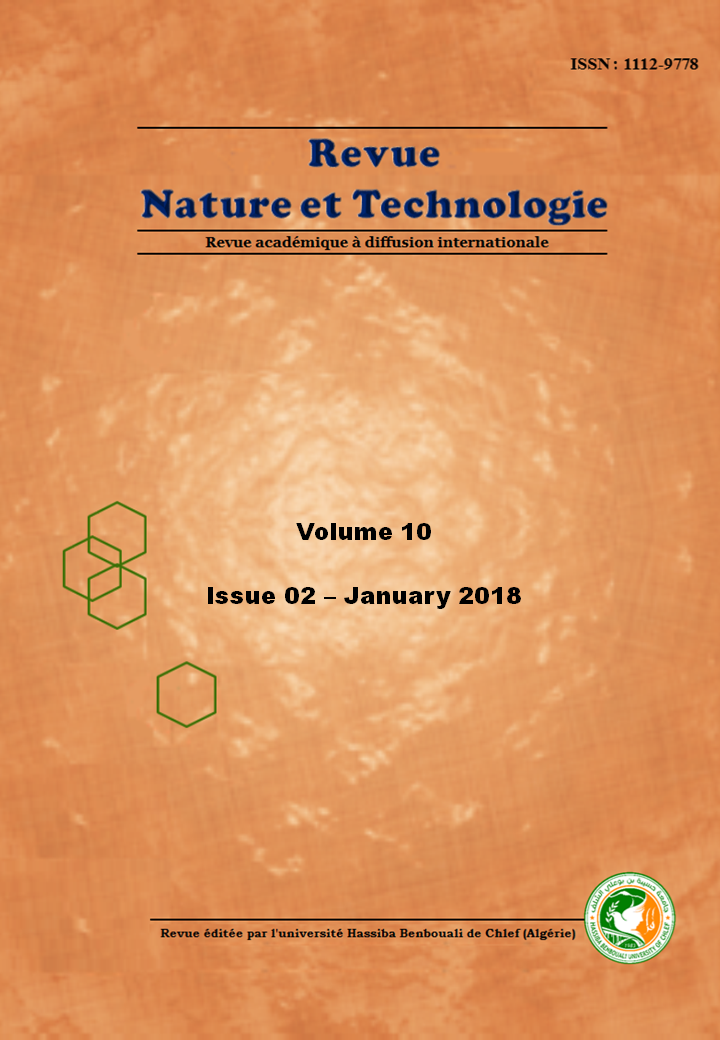Diet of the rough Acanthodactyl (Acanthodactylus boskianus) in the coastal habitats of the Gabes region
Keywords:
Acanthodactylus boskianus, Diet, Stomach contents, Habitat, GabèsAbstract
The knowledge of the diet of animals in their natural environment is a prerequisite for understanding their biology and ecology. Thus the aim of this study was to describe the diet of the Bosk’s Fringe-toed lizards Acanthodactylus boskianus, one of the most common lizards in the coastal habitats in Gabès region (southern Tunisia). In this area, this lizard species occurs in coastal dunes as well as in inland sandy habitats. So, we wished to compare the diversity of preys consumed by this lizard in both habitats: beach vs. backshore. Analysis of the stomach contents of 47 lizards showed a diet composed of various invertebrates, but that varied among habitats. In particular, we found that lizards living in sandy beaches included in their diets littoral preys, mostly Talitres (amphipods). Overall, our results confirm the alimentary opportunism of A. boskianus. They also emphasize the role of interface between the marine and terrestrial food chains played by this lizard species in the coastal ecosystems of the Gulf of Gabès. This last observation suggests that this lizard could also play a possible role in the transfer of pollutants (mainly heavy metals) discharged into the sea by the Gabès-Ghannouche industries of phosphate treatment from the sea to the terrestrial environment.
References
Audebert P., Hapiot P., Electroanal J. Chem., 361 (1993) 177.
Daudin F.M., Histoire naturelle générale et particulière des reptiles. Dufart, Paris, 452 p. 1802.
Salvador A., A revision of the lizards of the genus Acanthodactylus(Sauria: Lacertidae), Bonner Zoologische Monographien, 1982.
Nouira S., Biodiversité et statut écologique des reptiles et des scorpions des iles Kneiss, Ecologue – expert en Herpétologie, 8 p.
Khannoon E. R., " Comparative chemical ecology behavior and evolutionary genetics of Acanthodactylus boskianus (Squamata:
Lacertida) ", PhD Thesis, University of Hull, 169 p. 2009.
Hyslop E.J., Stomach contents analysis-a review of methods and their application, Journal of Fish Biology, 17 (1980) 411-429.
Lahoud H. M, Hraoui B. S, Sadek R, Jessy H. S., Régime alimentaire d’une population d’Acanthodactylus schreiberi syriacus
Böttger, 1879 (Reptilia Lacertidae) de la côte sud du Liban, Bulletin de la Société Herpétologique de France, 119 (2006) 17-25.
Arab K, Doumandji S. E., Etude du régime alimentaire de la Tarente de Mauritanie Tarentola mauritanica (Linné. 1758) (Gekkonidae) et le Psammodrome algire Psammodromus algirus (Linné. 1758) (Lacertidae) dans un milieu sub-urbain près d’Alger, Bulletin de la Société Herpétologique de France, 106 (2003) 10-16.
Baron J. P., Régime et cycles alimentaires de la Vipère d'Orsini, Vipera ursinii (Bonaparte, 1835) au Mont Ventoux, France, Review of Ecology, 46 (1992) 11-35
SAS Institute, SAS/STAT User’s Guide. Cary: SAS Institute, 1999. [11] Carretero M. A., Digestive size and diet in Lacertidae: a preliminary analysis, Herpetologia Bonnensis, 1997. 43-49.
Kalbousi M., Nouira S., Régime alimentaire de Mabuya vittata (Olivier, 1804) (Reptilia : Scincidae) en Tunisie, Bulletin de la Société Herpétologique de France, 109 (2004) 43-50.
Illou S., " Impact des rejets telluriques d’origines domestiques et industrielles sur l’environnement côtier : cas de littoral de la ville
de Sfax ", Thèse de doctorat, Université de Tunis, 259 p. 1999.
Rainbow P.S. Phylogeny of trace metal accumulation in crustaceans, In: Langston W.J and Bebianno M. editors, Metal metabolism in aquatic environments, London: Chapman and Hall, 1998. 285-319.
Rainbow P.S., Trace metal concentrations in aquatic invertebrates: why and so what? , Environmental Pollution, 120 (2002) 497-507.
Nasri I., Hammouda A., Hamza F., Zrig A. & Selmi S., Heavy metal accumulation in lizards living near a phosphate treatment
plant: possible transfer of contaminants from aquatic to terrestrial food webs, Environmental Science and Pollution Research, 2015, DOI 10.1007/s11356-015-5390-x
Melchiorri D., Del Duca C., Piccirilli S., Trombetta G., Bagetta G., Nistico G., Rainbow P.S., Fialkowski W. & Smith B. D., The Sandhopper Talitrus saltator as a Trace Metal Biomonitor in the Gulf of Gdansk, Poland. Marine Pollution Bulletin, 36 (1998) 193-200.
Mouquet C., Premier inventaire des invertébrés terrestres des plages du département du Calvados, Rapport Gretia pour le Syndicat
Mixte Calvados Littoral Espaces Naturels, 36 p., 2006.

Downloads
Published
How to Cite
Issue
Section
License
Copyright (c) 2018 Nature & Technology Journal

This work is licensed under a Creative Commons Attribution 4.0 International License.
- All publications of "Nature & Technology Journal" are available under CC-BY Creative Commons Attribution 4.0 International which allows sharing, copying, reproduction, distribution, communication, reuse, adaptation by all means, in all formats and under all licenses.
- Any exploitation of the work or derivative works, including for commercial purposes, is possible. The only obligation is to credit the creators of the authorship of the original works, to indicate the sources and to indicate if modifications were made to the works (obligation of attribution).
This License gives:
- Nature & Technology Journal the right to develop, promote, distribute and archive the article set cited above (including, without limitation, the right to publish the work in whole or in part in any form whatsoever) and ensure the widest dissemination.
- The author (s) reserves the right to use all or part of this article, including tables and figures of his own works, providing that the appropriate recognition is given to the publisher as the holder of the copyrights, and the right to make copies of this article for its own use, but not for sale.




